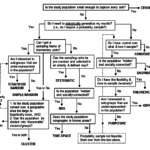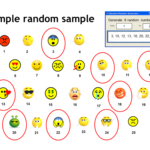Goldilocks had it easy. She only had three chairs, three bowls of porridge and three beds to choose from, and the relevant features were pretty straightforward. It is not so easy to pick the right journal for publishing your research. First, there are hundreds of journals to choose from. Second, there are various features that differentiate them. And finally, some journals, like the three bears, are predatory and should be avoided.
Finding that just right journal is worth the effort, though. Even if that peer-reviewed journal article is not what the policymakers and program managers read, many of them do want to know that the evidence their advisors is giving them is backed-up by scientific and social scientific literature. They do want citations, even if they don’t read the cited articles themselves. And publishing your findings in a peer-reviewed journal is also the best way to have them included in evidence syntheses. So how to find the journal that is just right for your research?
Identifying appropriate journals
There is no single right way to find the best journal for your manuscript, but you can employ several methods to get the most comprehensive list of potential contenders.
- Searching databases of peer-reviewed literature. You likely searched for peer-reviewed literature while researching your topic and writing your paper. You can employ the same search to identify potential journals. Run these searches again but this time when examining your search results, pay attention to the journals in which the papers were published. Do you see the same journals coming up over and over again? Does the name of a journal reflect your topic or part of your topic? Do you see a journal you’ve never heard of? Make a list of the journals that you want to explore further. These are some free, reputable databases for searching peer-reviewed literature and the journals in which they were published:
- Google Scholar: multidisciplinary literature
- PubMed: biomedical literature
- ERIC: education literature (limit to Journal Articles under Publication Type)
- EconPapers: economic literature (limit to Journal Articles in Advanced Search)
- Directory of Open Access Journals (DOAJ): open access journals only
- Crowdsourcing suggestions from your professional community. Colleagues can be a great resource as they may have experience and advice on submitting to specific journals. Topical listservs both internal and external to your organization can also be a resource. Researchers list their publications on social media sites for researchers, such as ResearchGate; members of these sites can browse citations to get additional ideas for journals.
- Using library resources. If your institution has a library, consult with your librarians as they will likely be knowledgeable of many journals and may have access to some literature databases that are subscription-only. They would also be able to provide guidance for searching databases on your topic. Even if you don’t have a library at your disposal, many large academic libraries have comprehensive research guides on their websites that are accessible to anyone.
What to look for in a journal
Once you have a short list of potential journals, you will want to examine them more closely to see if they are a good fit for your manuscript.
Visit each journal’s website and ask the following questions:
- How well does the scope of the journal match my research? The scope is a brief description of the topics the journal covers as well as the target audience. Some journals are geared to a particular audience, for example, clinicians versus researchers for a medical journal. You want to make sure that the topic matches yours but also that the journal’s audience is your intended audience.
- Is the journal indexed in one or more scholarly literature databases? Journal websites will typically list the literature databases in which their articles are indexed. Look for the names of databases you have searched before or have heard of in the course of your studies. Academic libraries often have lists of recommended databases by topic area, such as this list from UNC, and you can compare these recommendations to the databases listed on the journal website.
- Is the journal open access or does it have an open access option? Most journals now offer the option to make an article open access, meaning it will be available for free to all readers. Some funders, such as the NIH and the Bill & Melinda Gates Foundation, have open access policies that require studies they support be published open access or made open access after an embargo period. There is typically a fee associated with publishing open access and some funders, like the Gates Foundation, will pay that fee so it’s important to examine your agreement with your funder.
- Are the author requirements consistent with my proposed manuscript? A key consideration here is the length of articles. If your research is relatively complex, you may need a journal that allows for longer manuscripts.
- How does this journal compare to other journals? Different metrics are continually being developed to measure the quality and impact of a journal. The metrics commonly reported on a journal’s website include Impact Factor, CiteScore, Eigenfactor, SCImago Journal Rank (SJR) and Source Normalized Impact per Paper (SNIP); John Hopkins University Libraries has a good overview of these different metrics. No metric is perfect and these metrics should be used in combination with the other factors discussed above to evaluate whether a journal is a good fit for your manuscript.
Avoiding predatory journals
Have you ever received an email from an unfamiliar journal asking you to submit a manuscript, serve on its editorial board or to feature an article you’ve published elsewhere (for a fee)? These are the tactics of predatory journals. Predatory journals are open access journals that exist solely for profit, not dissemination of research. With the success and increased presence of open access journals, entrepreneurs saw an opportunity for profit. Most open access journals charge a fee for publication but with predatory journals, there is nothing in return: little to no peer review and no dissemination in scholarly literature databases, if the article is published at all.
These are some questions to ask to determine whether a journal is predatory or not:
- How does the journal handle publication fees? Predatory journals often charge a fee at the time of submission of an article whereas reputable open access journals only charge a fee when an article is accepted.
- Is the journal indexed in familiar literature databases? As discussed in the section above, journal websites will list literature databases in which the journal is indexed. If this information is not available on a journal’s website, this is a warning sign. Likewise, literature databases report the journals they index so you can check for the journal there.
- Is the journal listed in authoritative open access resources? The Directory of Open Access Journals (DOAJ) and the Open Access Scholarly Publishers Association (OASPA) both have a rigorous application process to ensure only valid, high-quality open access journals are included.
- Have you or your colleagues heard of the journal before? Ask your colleagues if they are aware of articles published in the journal or know of authors who have published in the journal. Predatory journals will sometimes have very similar names to credible journals.
- Does the journal have an editorial board? A reputable journal will always list its editorial board and a manuscript should not be submitted to a journal that does not. If an editorial board is listed, you should be able to look up the members of the board on their institution websites to verify that they do have some expertise in the topic area of the journal and list their membership on the board; unfortunately, predatory journals have been known to make up fake names or include the names of real scholars without their consent.
There are many high-quality journals out there and new ones are coming online (literally and figuratively) every day. The number and variety of journals is good for science and social science. We hope this advice helps you to avoid the predators and find the journal that is just right.
Photo credit: sammydavisdog/CC BY 2.0 license




